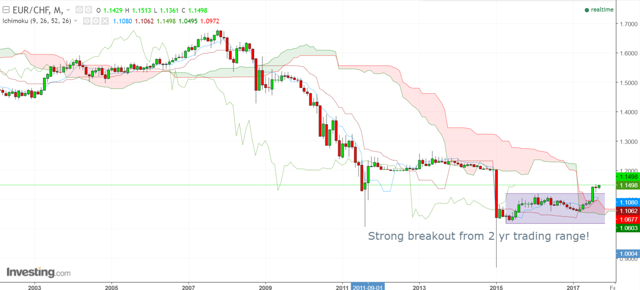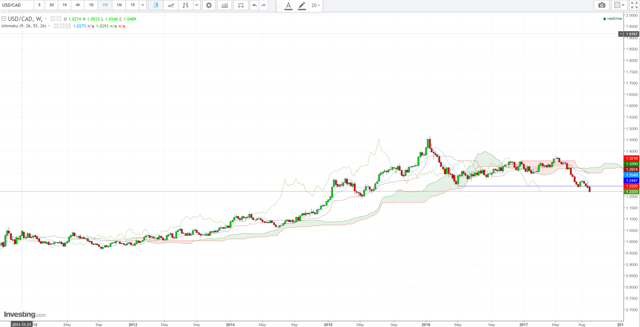Summary:
- Catalonia remains a risk.
- The Fed is determined to continue hiking and ECB is unlikely to start tapering anytime soon.
- Technically, EUR/USD has failed at key resistance levels.
Political Risk
The deadline given by the Prime Minister of Spain Rajoy to Catalan President Carles Puigdemont to clarify his declaration of independence has come and gone. The response from Puigdemont remains vague as he calls for more “dialogue”. The central government now gives him till Thursday to change his stance on secession or face the consequences.
Puigdemont has, essentially, painted himself into a corner. Going ahead with the independence declaration will likely lead to the central government invoking Article 155 of the constitution and suspending the authority of the Catalan government. Backing away from the declaration will provoke the ire of his supporters and lead to the unraveling of his pro-independence coalition.
Whichever path he takes, the political situation remains uncertain and will continue to weigh on the EUR.
Monetary Policy Divergence
From what the Federal Reserve Chair, Janet Yellen, has been telling the market all along and as recent as over the weekend, the Fed is going to continue hiking at a gradual pace and there will be one hike before the year ends (most likely in the December policy meeting).
Key in her comments over the weekend was her view on the lower than expected inflation numbers that have been the surprising the market all year – “My best guess is that these soft readings will not persist, and with the ongoing strengthening of labour markets, I expect inflation to move higher next year.”
Although inflation has remained subdued (or possibly, due to this), economic numbers have continued to be good and stocks continue to trade well. S&P 500 continue to make all-time highs on a regular basis. As long as this remain so, the Fed is unlikely to diverge from their much advertised plan.
Contrast this with Draghi’s relatively dovish stance of warning that it will take time for inflation to pick up and as such, the ECB needs to be patient. With EUR/USD trading near the highs of 2017, the policymakers will need to tread carefully in signaling any change in stance for fear of triggering an unwanted strengthening of the currency. Read more here>>>


